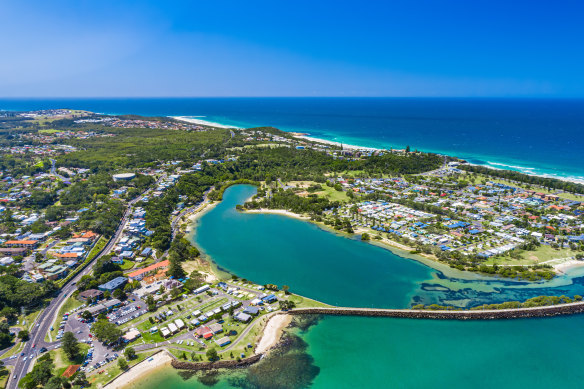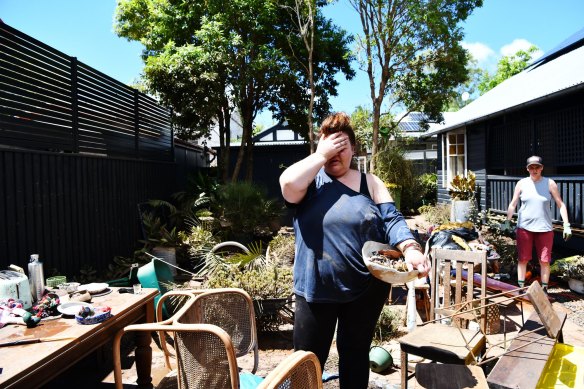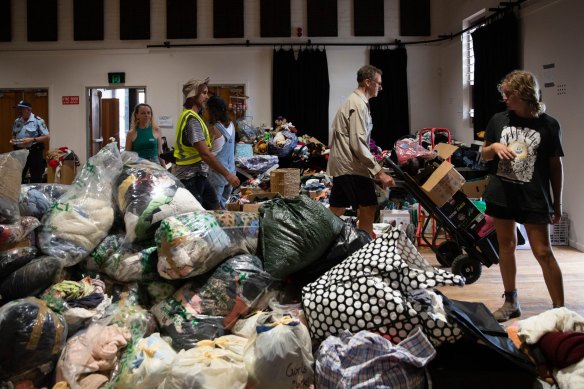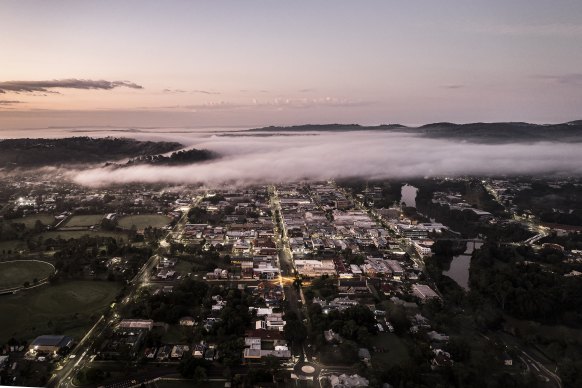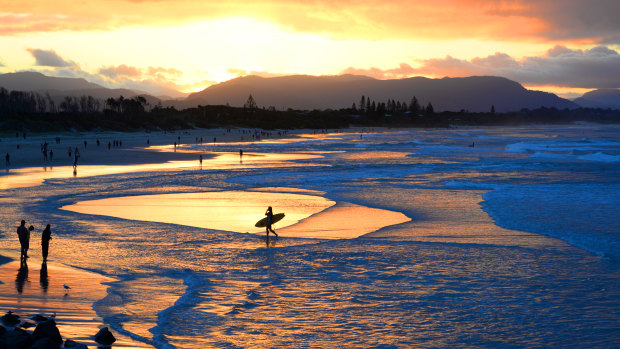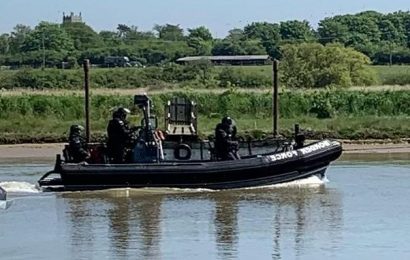Save articles for later
Add articles to your saved list and come back to them any time.
Victims left homeless by natural disasters must get priority over tourists in holiday towns, a report has found, after survivors reeling from last year’s floods were told to pack up and make way for holidaymakers.
Since February last year, the NSW government has booked and paid for more than 207,000 nights of accommodation to accommodate flood victims in Northern NSW, the Department of Communities and Justice said, using 397 providers.
Flood victims had to make way for holidaymakers on the Far North Coast of NSW last year.
But relying on tourism accommodation to house traumatised survivors of natural disasters also poses significant issues, a report into the experiences of last year’s flood victims has found.
The report, by Natural Hazards Research Australia, found these challenges were especially acute in the Northern Rivers last year, given the floods hit six weeks before Easter and the region is a top tourist destination.
One NSW survivor told researchers the accommodation provider had done what she could to hold on to the room, but the incoming guests would not budge on their holiday plans.
“She was ringing people saying, “Can you cancel your holiday” or “Can you just change your room?” So that I didn’t have to change rooms, and they would say “No, we’re not cancelling our holidays. No”.
Kym Strow tries to salvage what she can from her Lismore home after the February flood last year.Credit: Elise Derwin
“She was like “I’m so sorry. You have to go out to go into another room. The people won’t change”.
Another survivor from Queensland recounted a similar story at a caravan park.
“They were told to leave and they didn’t know when they could go back. They had nowhere to go. And you saw full families with little kids, mums that were breastfeeding; and they were crying.”
Last week, the Independent Planning Commission applauded the way short-term accommodation owners had responded to the need for emergency housing in the region after the floods and said using such accommodation should become the “standard response” to emergencies.
Mullumbimby locals manage donated goods for flood victims in March last year.Credit: Janie Barrett
But Natural Hazards Research Australia found more could be done before any further disasters to build relationships with the tourism sector and accommodation providers such as Airbnb and Stayz, to ensure victims have more stable accommodation.
“The requirement to check out, wait, and check in was a confronting, and regular, reminder of their change of situation,” the report said of the experience flood victims faced.
“The issue of the Easter holidays compounded the impacts … The distress of being evicted or having to move within accommodation so that others could enjoy their holidays was confronting for many residents – and was hard also for those managing the accommodation … dealing with distressed and traumatised people is not business as usual.”
The Department of Communities and Justice said it “works closely with accommodation providers to ensure people affected by natural disasters have a safe and stable place to stay” and it had helped thousands of people with accommodation and other support since the 2022 floods.
Lismore was devastated by a record-breaking flood in February last year.Credit: Brook Mitchell
The Independent Planning Commission handed down its own report last week into the short-term accommodation industry in the Byron Shire Council and what could be done to help ease the region’s housing crisis. While noting the positive response of holiday home-owners during the floods, it said they should only be allowed to rent out their houses short-term for 60 nights a year unless they receive council approval.
The commission said such a limit would help address the shortage of long-term rentals in the area, a situation the floods had exacerbated.
Thousands of people were left homeless across the Northern Rivers in February and March when severe rain caused major flooding that also affected other parts of the state and areas of south-east Queensland.
Byron Bay is a difficult area for finding accommodation at the best of times. Credit: iStock
The Natural Hazards Research Australia report charts the experiences of flood victims in NSW and Queensland and documents the challenges they faced in the weeks and months after the disaster.
Almost 200 flood survivors spoke to researchers for the report and another 430 shared their views through a survey. The report found more than a quarter of survivors had less than two hours to act before the flood hit their homes after becoming aware of the threat, and almost a quarter of those who sheltered at home had to be rescued. About three-quarters were saved by good Samaritans, rather than emergency services.
The report found there needed to be a “significant shift” in emergency management and among response agencies to better connect with local communities.
Survivors also faced a litany of hurdles in rebuilding their lives: over-zealous helpers ripped out more than they should have from flood-damaged houses; fraudsters claimed government benefits before the eligible victims could; and a lack of tradespeople caused significant delays in rebuilding.
The report called on the insurance sector to lift its game and ensure it had more resources available to help people after a disaster.
“Given the distress, increasing financial burdens, and difficulties with finding affordable housing, the insurance industry needs to review its performance during these floods,” it said.
“More advocacy roles and personal support services to enable community members to navigate the claims process are also required.”
The research was carried out in partnership with Macquarie University, the University of Southern Queensland and the Queensland University of Technology.
Natural Hazards Research Australia said the results of the research would help emergency services, government agencies and other organisations prepare for future disasters.
Airbnb and Stayz have been approached for comment.
The Morning Edition newsletter is our guide to the day’s most important and interesting stories, analysis and insights. Sign up here.
Most Viewed in National
From our partners
Source: Read Full Article
